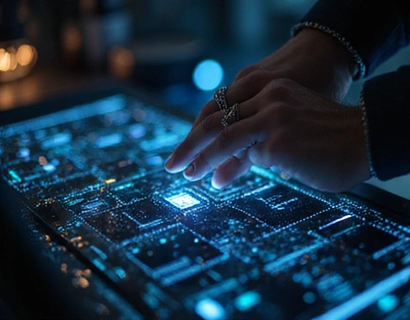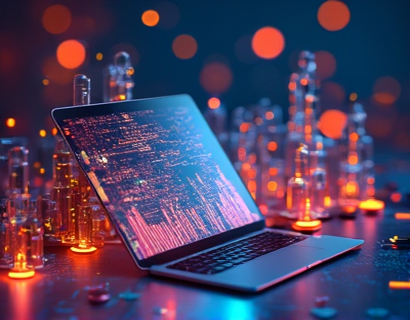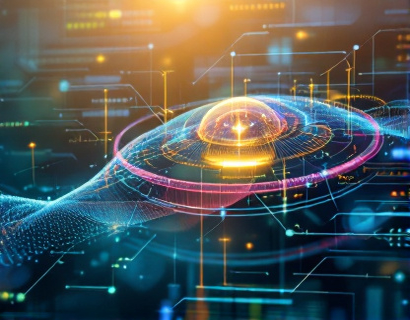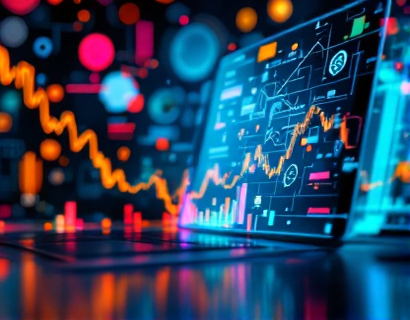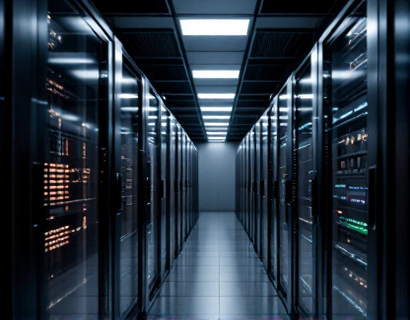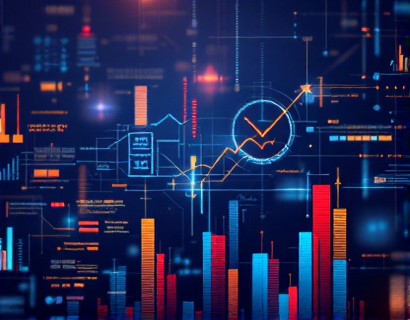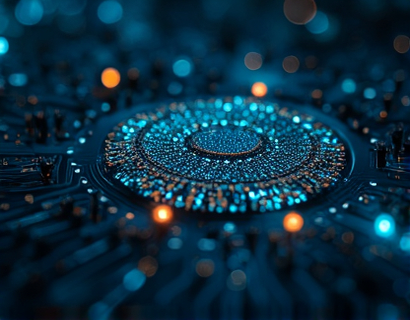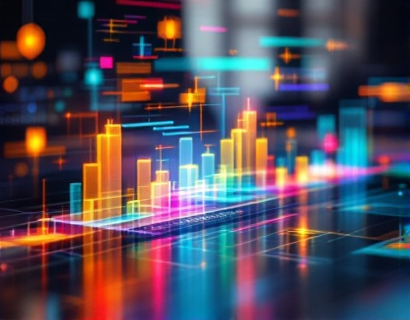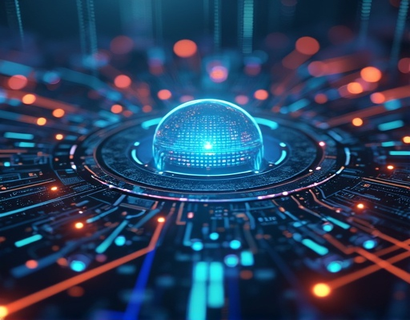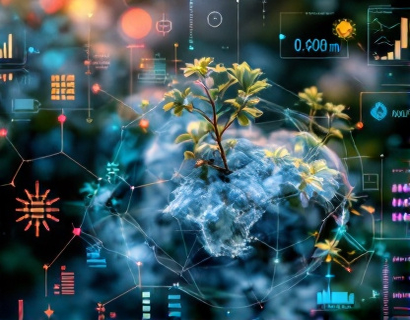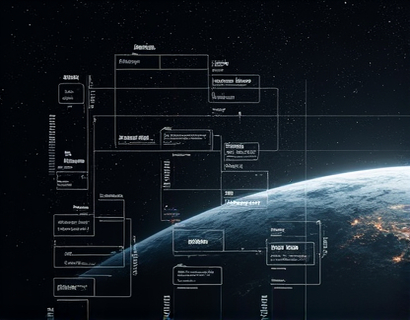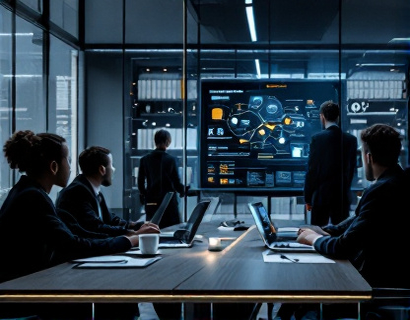AI and Crypto: A Synergistic Force Reshaping Digital Experiences
The intersection of artificial intelligence and cryptocurrency is giving rise to a new era of digital transformation, where the boundaries of technology are being redefined. This fusion is not just about combining two advanced fields but creating a synergy that enhances user experiences, secures transactions, and opens up new possibilities in the digital realm. As tech enthusiasts and innovators, understanding this integration is crucial for anyone looking to stay ahead in the rapidly evolving tech landscape.
Understanding the Basics: AI and Cryptocurrency
Artificial intelligence, or AI, refers to the simulation of human intelligence processes by machines, particularly computer systems. These processes include learning, reasoning, and self-correction. AI technologies encompass a broad range of applications, from simple data analysis to complex decision-making systems.
Cryptocurrency, on the other hand, is a digital or virtual currency that uses cryptography for security. It operates on a decentralized network, typically a blockchain, which ensures transparency and immutability of transactions. Bitcoin, launched in 2009, is the most well-known cryptocurrency, but thousands of others have emerged, each with unique features and purposes.
The combination of AI and cryptocurrency is particularly potent because AI can enhance the functionality, security, and user experience of blockchain-based systems. Conversely, the decentralized and secure nature of cryptocurrency can provide a robust framework for AI applications, especially those requiring high levels of data integrity and privacy.
Enhancing Security with AI
One of the primary benefits of integrating AI with cryptocurrency is the significant improvement in security measures. Traditional cybersecurity methods often struggle with the evolving tactics of cybercriminals. AI, however, can analyze vast amounts of data in real-time, identifying patterns and anomalies that indicate potential threats.
For instance, AI-driven systems can monitor blockchain networks for suspicious activities, such as unusual transaction patterns or attempts at double-spending. Machine learning algorithms can be trained to recognize these patterns and automatically trigger alerts or enforce preventive measures. This proactive approach to security not only protects users' assets but also builds trust in cryptocurrency as a reliable and secure form of digital currency.
Moreover, AI can enhance the security of private keys and wallet management. Biometric authentication, powered by AI, can provide a more secure and convenient way to access cryptocurrency wallets. Face recognition, fingerprint scanning, and even behavioral biometrics can be integrated to ensure that only authorized users can access sensitive information.
Optimizing Blockchain Performance with AI
Blockchain technology, while revolutionary, faces challenges related to scalability and transaction processing speed. AI can play a crucial role in optimizing these aspects, making blockchain more efficient and user-friendly.
One approach is to use AI for transaction validation and block creation. By analyzing historical data and current network conditions, AI algorithms can predict the most efficient way to validate transactions and create new blocks. This can reduce the time and computational resources required, leading to faster transaction times and lower fees.
Another area where AI can make a significant impact is in consensus mechanism optimization. Traditional consensus mechanisms, like Proof of Work, are energy-intensive and slow. AI can assist in developing and implementing more efficient consensus algorithms, such as Proof of Stake or hybrid models, by simulating various scenarios and predicting outcomes.
Additionally, AI can help in managing network congestion. By predicting peak usage times and dynamically adjusting network parameters, AI can ensure that the blockchain remains responsive and reliable, even under heavy load.
Personalized User Experiences through AI
The integration of AI with cryptocurrency extends beyond security and performance to enhance the overall user experience. Personalization is a key area where AI can add significant value.
Cryptocurrency platforms can leverage AI to offer tailored recommendations based on user behavior and preferences. For example, a digital asset management platform can use AI to analyze a user's investment history, risk tolerance, and market trends to suggest optimal investment strategies. This not only simplifies the decision-making process for users but also increases the likelihood of successful outcomes.
AI-powered chatbots and virtual assistants can provide 24/7 customer support, answering queries, and guiding users through complex processes. These AI-driven interfaces can understand natural language, making interactions more intuitive and user-friendly. For newcomers to the crypto space, such tools can demystify the technology and make it more accessible.
Furthermore, AI can enhance the user interface and experience design of crypto applications. By analyzing user interactions and feedback, AI can suggest design improvements and optimize the layout for better usability. This continuous feedback loop ensures that applications evolve to meet the changing needs of users.
Decentralized Finance (DeFi) and AI
Decentralized Finance, or DeFi, is a rapidly growing sector within the cryptocurrency ecosystem, offering traditional financial services on blockchain platforms. AI can significantly enhance DeFi applications by improving risk management, automating trading, and enhancing liquidity.
Risk management in DeFi is critical due to the high volatility and complexity of decentralized markets. AI can analyze vast datasets to identify potential risks and suggest mitigation strategies. For instance, AI models can predict price movements based on historical data, market sentiment, and other factors, helping users make informed decisions.
Automated trading, or algorithmic trading, is another area where AI shines. AI-driven trading bots can execute trades based on predefined criteria, executing at optimal times to maximize profits and minimize losses. These bots can operate around the clock, reacting faster than human traders to market changes.
Liquidity provision is essential for the smooth functioning of DeFi platforms. AI can help in matching buyers and sellers more efficiently by analyzing market conditions and user behavior. This ensures that liquidity pools are well-stocked and that transactions are executed smoothly, reducing slippage and improving user satisfaction.
Supply Chain and IoT Integration
The integration of AI and cryptocurrency extends beyond the financial sector, impacting supply chain management and the Internet of Things (IoT). These industries can benefit from the transparency, security, and efficiency provided by blockchain, enhanced by AI technologies.
In supply chain management, blockchain can track the movement of goods from production to delivery, ensuring authenticity and reducing fraud. AI can analyze this data to optimize logistics, predict delays, and improve overall efficiency. For example, AI can identify the most cost-effective routes, optimize inventory levels, and detect potential bottlenecks before they occur.
IoT devices generate vast amounts of data that can be leveraged for various applications. By integrating AI with blockchain, this data can be securely stored and analyzed, providing insights into device performance, maintenance needs, and usage patterns. Smart contracts can automate processes based on these insights, such as triggering maintenance alerts or adjusting settings for optimal performance.
Challenges and Considerations
While the integration of AI and cryptocurrency offers numerous benefits, it also presents challenges that need to be addressed. One of the primary concerns is the regulatory landscape. As both AI and cryptocurrency operate in areas with evolving regulations, ensuring compliance can be complex. Developers and businesses must stay informed about legal requirements and adapt their solutions accordingly.
Another challenge is the technical complexity of integrating these technologies. Developing robust systems that seamlessly combine AI and blockchain requires expertise in multiple domains. Collaboration between AI specialists, blockchain developers, and cybersecurity experts is essential to overcome these technical hurdles.
Privacy is also a critical consideration. While AI can enhance security, it also involves the collection and analysis of large datasets, raising concerns about user privacy. Implementing strong privacy protocols and ensuring transparency in data usage are crucial to maintaining user trust.
Future Prospects: A Connected Digital World
The future of AI and cryptocurrency integration holds immense potential. As technology continues to advance, we can expect more sophisticated applications that further blur the lines between these fields.
One exciting area is the development of AI-powered digital identities on the blockchain. These identities can be managed and verified securely, providing users with greater control over their personal data. This can revolutionize industries such as finance, healthcare, and governance, where identity verification is paramount.
Another promising direction is the integration of AI with non-fungible tokens (NFTs). AI can enhance the creation, authentication, and trading of NFTs, opening up new possibilities in digital art, collectibles, and virtual real estate.
Moreover, the convergence of AI and cryptocurrency can drive the adoption of decentralized applications (dApps) across various sectors. As dApps become more user-friendly and efficient, thanks to AI optimizations, we can see a shift from centralized to decentralized systems, fostering innovation and democratizing access to technology.
In conclusion, the integration of AI and cryptocurrency is not just a technological trend but a transformative force that is reshaping digital experiences. By enhancing security, optimizing performance, and personalizing user interactions, this synergy is paving the way for a more connected, efficient, and secure digital world. As tech enthusiasts and innovators, embracing these advancements will be key to staying at the forefront of the next technological revolution.












